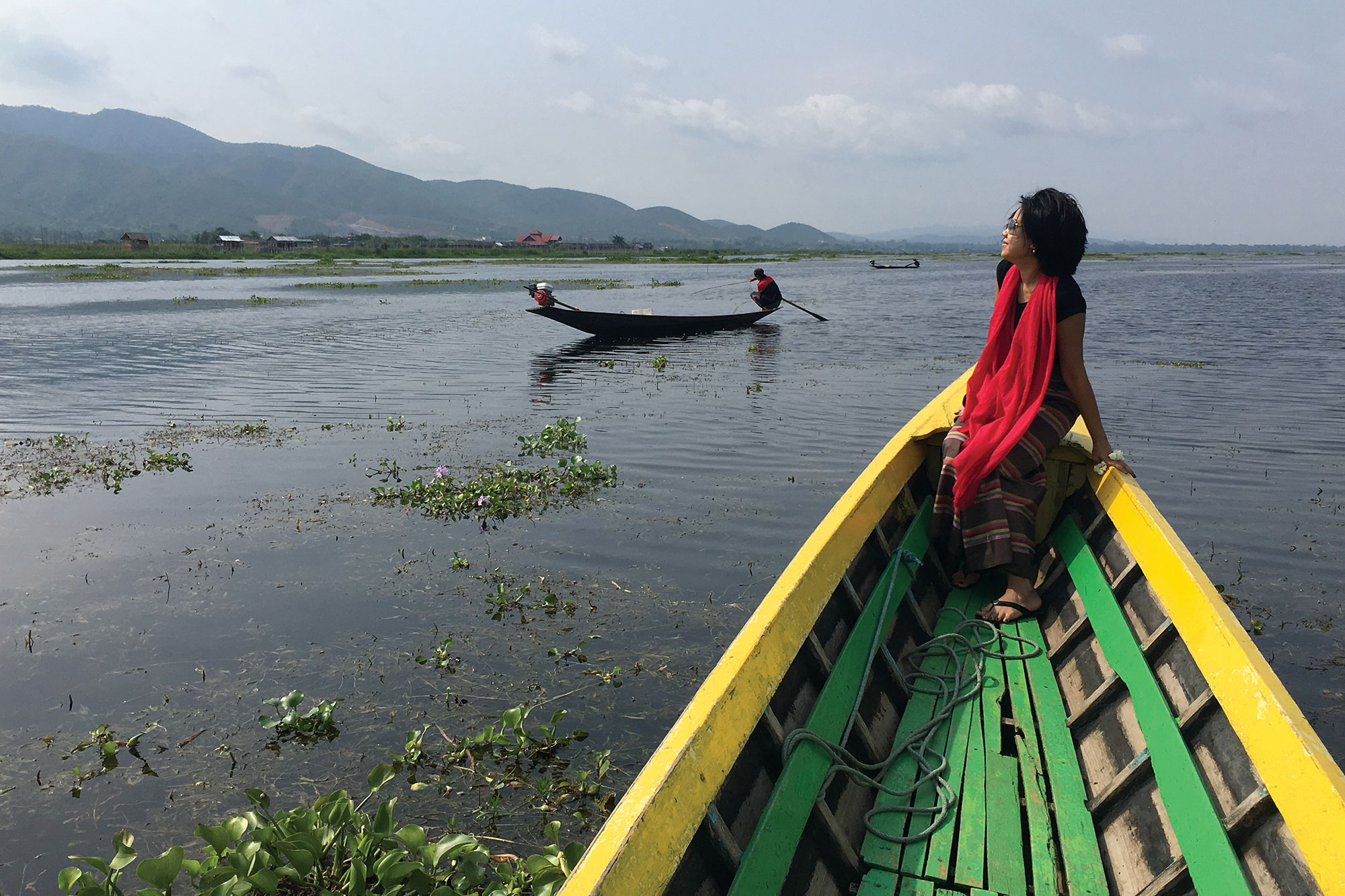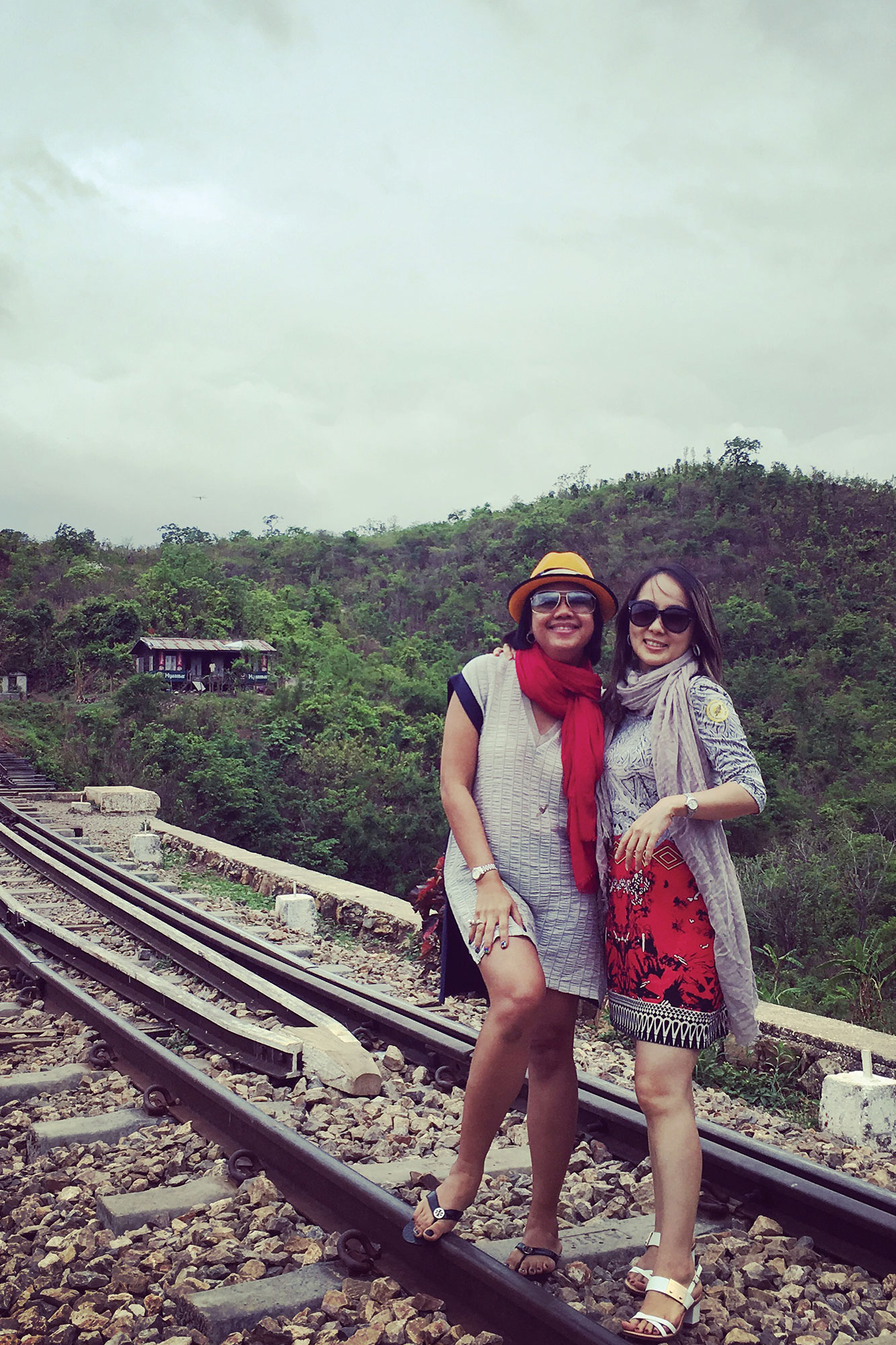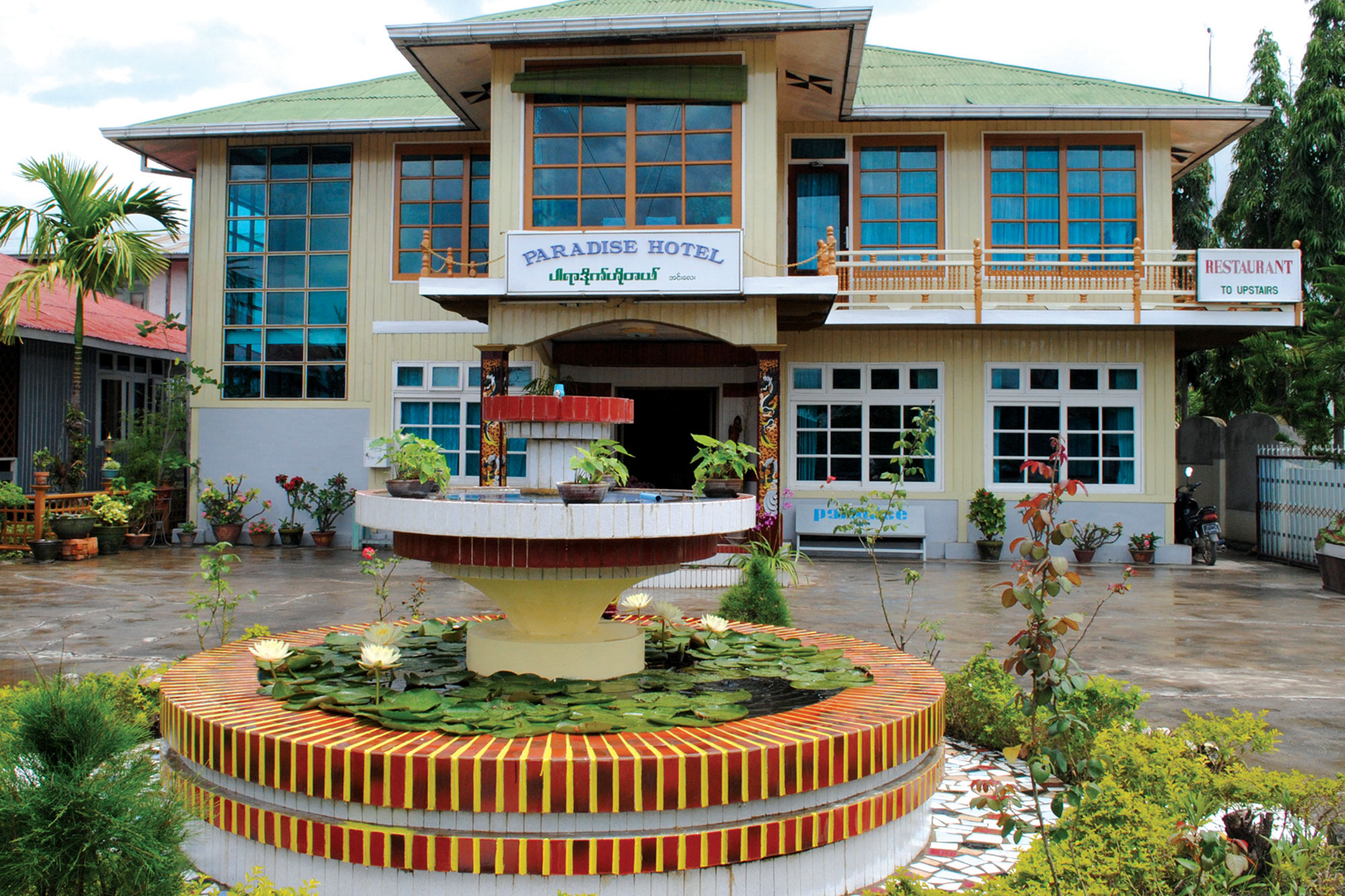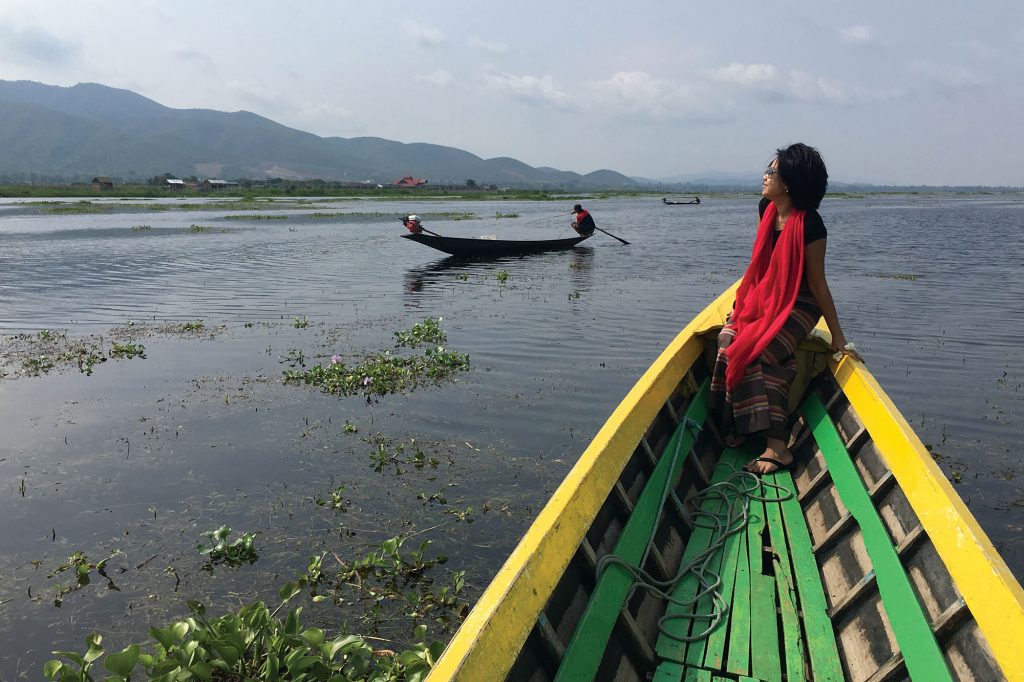“I was excited to return to Myanmar,” gushed Ratiros ‘Looknam’ Thanatit, a Chiang Mai woman who lived with her family in Yangon for three years before returning to Thailand recently. “So when my friend Pyone Myat Khaing, who we call by her nickname Celine, invited me to visit her hotel in the Shan State, it took about a second for me to say, YES!”

Looknam, a graduate of Chiang Mai University, married her high school sweetheart who is a geophysicist for PTTEP. For the past decade, her family has lived in the United Kingdom, Oman as well as Myanmar.
“Living in Yangon I got to explore Myanmar a lot and I simply love that country; the food, the people, the culture, the nature. Inle Lake was always one of my favourite destinations and I had spent many a happy holiday sitting on a plush hotel deck watching the sunset over Inle. So when my friend told me her family had a hotel in the town of Nyaungshwe, right on the banks of the lake, I booked my flight.”
 From Chiang Mai, it is a one hour flight to Mandalay and a short half hour jump to the charmingly named Heho Airport in Shan State. It is a further one hour’s drive to Nyaungshwe, though some enjoy taking the extra two hour detour to visit the Buddha statue–laden pilgrimage caves of Pindaya. This meandering drive offers a glorious look at the countryside, especially during the cool months, when kaleidoscopic fields of flowers blanket the scenery, a source of inspiration for some of Myanmar’s most acclaimed artists.
From Chiang Mai, it is a one hour flight to Mandalay and a short half hour jump to the charmingly named Heho Airport in Shan State. It is a further one hour’s drive to Nyaungshwe, though some enjoy taking the extra two hour detour to visit the Buddha statue–laden pilgrimage caves of Pindaya. This meandering drive offers a glorious look at the countryside, especially during the cool months, when kaleidoscopic fields of flowers blanket the scenery, a source of inspiration for some of Myanmar’s most acclaimed artists.
Arriving in Nyaungshwe, you will be surprised by its resemblance to Pai with its quirky cafes, dreadlocked travellers peddling slowly down its small streets, vendors plying their trade in the shade, shoeless children playing games on pavements, and the occasional glittering temple or pagoda to draw the eye. But unlike Pai, Nyaungshwe is not overrun by commercialism or tourists; it is still a bustling little town much ignored by tourists who tend to use it as a last pit stop before embarking on a long tail boat to their resorts on the lake.
“I had a completely different experience staying at Paradise Hotel in the town,” Looknam told us. “Celine and I checked into a lovely and spacious bungalow, and I found the hotel to be wonderfully peaceful with plenty of privacy. In the mornings, I simply leaned out of my window to see a row of alizarin–clad monks walking past collecting alms. It was stunning. Then we went to the reception to book a tour of Inle and waited in the lovely garden on the hotel grounds to be picked up. I only realised after that it was only a ten minute walk to the docks, but soon we were escorted onto a long tail boat and gliding smoothly over the lake.”
The second biggest lake in Myanmar, Inle, is flanked on one side by a range of mountains. Numerous communities have lived on, or off, its shores for centuries mostly on wood stilted houses and much of the traditional income came from fishing and later on, agriculture. Today tourism is the area’s bread and butter and tourists enjoy visiting temples, craft shops, villages and markets in and around the lake. Five star luxury hotels abound, but once the sun sets, guests are often left with nowhere to go but bed.
“Staying in town was completely different; you actually get to do things after the sun sets,” shared Looknam. “There isn’t much of a night life, but there are a handful of restaurants and bars open. After so much local food, we kind of really got into the Golden Kite, an Italian pizzeria with recipes from an Italian lady from Bologna who taught locals how to bake. The fusion Shan French cuisine at The French Touch, while watching a good documentary, was another favourite of ours.”

“Mornings are the best time of the day; this is when the lake is at its most beautiful and the town itself, bathed in morning light, at its most charming. I am a big mohinga lover [a traditional Myanmar breakfast of rice noodles in fish soup] so of course we had to have that every morning at the hotel, and it was really delicious. It got us ready for the day of exploring. Though I didn’t have to go far,” she laughs. “It turns out Nyaungshwe’s main tourist attraction, the Shwe Yan Pyay Monastery, was just a short 20 minutes’ drive north of the town.
This beautiful 19th century wooden monastery with its famous oval windows is one of the most photographed buildings in Myanmar. With the pre-noon light at its best in creating shapes of shadows and light — novices and monks casually framed in doorways do nothing to diminish from the Instagram moments enjoyed by numerous tourists.
“Not far from there, Celine and I discovered the Everest Nepali Food Centre, a rather longwinded name for a Nepali restaurant, which was just divine. The food was authentic and the prices were great. I think we had most of our meals there!” enthused Looknam.
“Most days we just grabbed one of the free bicycles from the hotel and explored the town. We stopped by Shwe Yaunghwe Kyaung, a lovely temple with an assortment of Buddha images with very few tourists. We peddled down little sois and peered into houses where women were cooking and old people were sleeping and enjoyed taking in the daily lives of those living in this small town. There were basket weavers and sarong sellers peddling their wares. It reminded me of Chiang Mai in our childhood where every house was open to the street; you could simply walk into someone’s home and have a chat and there would be absolutely nothing wrong with that. The people were so welcoming and friendly. We came across the 19 Gallery, a great place to visit as they are always featuring new Burmese artists, as well as markets and lovely gift shops. There is a strong local café and tea culture here and anything from a trendy café to a humble street side tea stall with grilled intestines would be bustling all day long.”
“We normally returned to the hotel in the evenings, all weary, where we would get a wonderful massage by the staff. This helped us gain just enough energy to leave the hotel again for dinner,” she laughs.
Celine’s family has owned Paradise since 1996, being one of the first handful of hotels on Inle Lake, today there are over 70. Unlike numerous lake-side hotels which cost in the high thousands of baht or more, Paradise starts at an eminently reasonable 2,000 baht per night. There is a building and some bungalows, though Looknam whispers that if you can, go for the bungalow, as they open straight out onto the gardens.
Only a couple of very short flights from Chiang Mai and you too could be cycling past old monasteries from Paradise to lake.
www.inleparadise.com
hotelparadise2009@gmail.com
